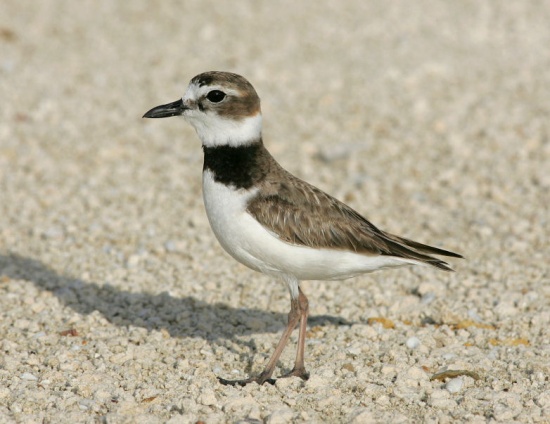(→External Links: GSearch amended) |
|||
| (2 intermediate revisions by one other user not shown) | |||
| Line 2: | Line 2: | ||
;[[:Category:Anarhynchus|Anarhynchus]] wilsonia | ;[[:Category:Anarhynchus|Anarhynchus]] wilsonia | ||
''Charadrius wilsonia'' | ''Charadrius wilsonia'' | ||
| − | |||
==Identification== | ==Identification== | ||
16·5–20 cm (5½-7¾ in)<br /> | 16·5–20 cm (5½-7¾ in)<br /> | ||
| Line 49: | Line 48: | ||
{{ref}} | {{ref}} | ||
==External Links== | ==External Links== | ||
| − | {{GSearch|"Charadrius wilsonia" {{!}} "Wilson's Plover"}} | + | {{GSearch|"Anarhynchus wilsonia" {{!}} "Charadrius wilsonia" {{!}} "Wilson's Plover"}} |
| − | |||
{{GS-checked}}1 | {{GS-checked}}1 | ||
<br /> | <br /> | ||
Latest revision as of 03:01, 13 March 2024
- Anarhynchus wilsonia
Charadrius wilsonia
Identification
16·5–20 cm (5½-7¾ in)
Adult
- Upper parts mostly dark grey
- Short white wing bar
- White tail sides
- White underparts apart from breast band
- Legs are pink, brighter when breeding
- Bill is dark (larger and heavier than similar-sized plovers)
Breeding male
- Black breast band, lores and forecrown
- Rufous mask
Female and non-breeding male are similar but have brown or rufous backs. Non-breeding birds have a greyer tinge on the head and breast band
Immature birds: similar to the female, however the breast band is not always complete
Distribution
North, Central and South America
Breeds on both coasts of North America. The range includes much of the eastern coast, and the west coast of Mexico.
A partial migrant. Some birds winter in Florida, the rest move south to Brazil and Peru
Taxonomy
Subspecies
There are 4 subspecies1:
- A. w. wilsonia :
- Coastal eastern US to Belize and West Indies; winters to eastern Brazil
- A. w. beldingi:
- Pacific coast of Baja California to southern Peru
- A. w. cinnamominus:
- Colombia to French Guiana; winters to Netherlands Antilles
- A. w. crassirostris
- Coastal north-eastern Brazil (Amapá to Bahia)
An additional subspecies rufinucha is not recognized by all authorities1
Habitat
Sandbars and sandy beaches.
Behaviour
Diet
They move slowly when feeding. The diet consists mostly of crabs, insects and marine worms.
Breeding
The nest is a bare scrape
Vocalisation
The call is a high weak whistle.
References
- Clements, J. F., P. C. Rasmussen, T. S. Schulenberg, M. J. Iliff, T. A. Fredericks, J. A. Gerbracht, D. Lepage, A. Spencer, S. M. Billerman, B. L. Sullivan, and C. L. Wood. 2023. The eBird/Clements checklist of Birds of the World: v2023. Downloaded from https://www.birds.cornell.edu/clementschecklist/download/
- Handbook of the Birds of the World Alive (retrieved August 2016)
- Wikipedia
Recommended Citation
- BirdForum Opus contributors. (2025) Wilson's Plover. In: BirdForum, the forum for wild birds and birding. Retrieved 12 May 2025 from https://www.birdforum.net/opus/Wilson%27s_Plover
External Links
GSearch checked for 2020 platform.1





